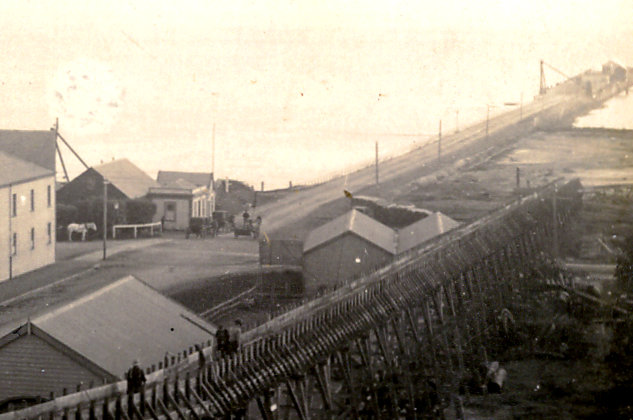Do you look for information? Photographs? Special mentions?
Well, do you know what your Thamesite's signature/s looked like?
 I have seen a few signatures of my female line, on documents relating to the suffrage petitions, The signatures allow you to stop and imagine the circumstances surrounding the event.
I have seen a few signatures of my female line, on documents relating to the suffrage petitions, The signatures allow you to stop and imagine the circumstances surrounding the event.Now thanks to the Kura Heritage Collection at Auckland Library you can see the signatures of possibly hundreds of Thamesites.
The resource in question is:
Addresses to Sir George Grey, K.C.B. on his seventy-fourth birthday. (Cover photo on right)
Details given are: Addresses presented to Sir George Grey K C B by the European and Maori residents in the Provincial District of Auckland on his seventy-fourth birthday, 14 April 1886. Consists mainly of autograph signatures to the illuminated addresses. Illustrated by James Slator
Produced by Wilson and Horton, Auckland.
Creative Commons Attribution: CC BYProduced by Wilson and Horton, Auckland.


Pages from the book.
The good news is that you can search for the surname you are after, or you can merely browse and read each page. There are 307 pages in total. The bonus is that each person signs their name and also the date of their arrival in New Zealand. Tangata whenua and women also sign the book. The term native NZ includes those who were born in New Zealand of European parents.

Names from Kiri Kiri Hauraki on page 299.

Signatures of Priscilla Williams, Mary Paull, C T Quinn, and Annie Curtis. Page 158.
If you are unsure of the signature, each page has been transcribed.
Well known Thames names on page 158 include:


James Adams, First Headmaster at Thames High School.


Colonel William Fraser, Mayor of Thames 1882-87.
Why am I interested in page 158?
Well this is where I found my Great, Great Grandfather's signature - Clement Augustus Cornes. In the crop below, at the top of the left column is C A Cornes, he arrived in New Zealand in 1862.

Search or Browse and see if you can find your Thamesites in the book presented to Sir George Grey in 1886.

Part of Page 8, introduction dated 14 April 1886.
Summary:
In total there are 12, 919 Signatures.
European 12,780; Maori 106; and Committee 33.
+++++++++++++++++++++++++++++++++++++++++++++++++++
UPDATE 7 July 2019
Special thanks to Helen at Auckland Libraries for information on how to just search the Sir George Grey Manuscript - GNZMS 275:
To search GNZMS 275 only:
- Go to Advanced Search
- Under Enter Search Term, type into the search box the image title with a wildcard asterix * after the item number, e.g. GNZMS_275*
- Then Add Row
- Type the name you want to search for in the search box. (sample below)
- Click on Search (sample result below)





































 . Years covered vary from 1990s to 2000s.
. Years covered vary from 1990s to 2000s.